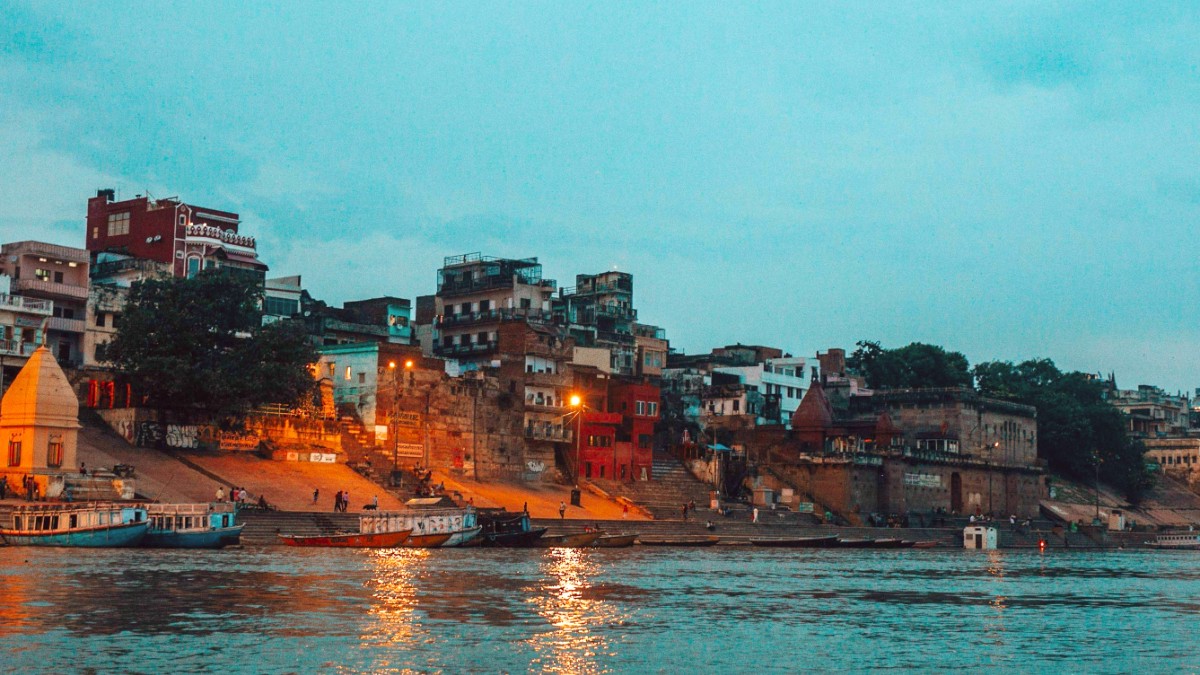
Uttar Pradesh, India
This is Varanasi, an uninterrupted tableau of faith, tradition, and human existence. It is a city that confronts the senses and stirs the spirit, inviting you to witness a living history and a devotion that spans millennia. Each moment on the ghats or in the labyrinthine alleys presents a profound connection to India's spiritual roots.
Varanasi sits in the eastern part of Uttar Pradesh, a large state in northern India. It rests securely on the western bank of the Ganges River, a waterway revered as a goddess. The city's position on this sacred river shapes much of its character and daily life.
Approximately 790 kilometers (490 miles) southeast of New Delhi, India's capital, Varanasi has a modest elevation of about 80.75 meters (265 feet) above sea level. This riverside placement means that many of the city's most important sites and activities are concentrated along the riverfront.
Varanasi, known also by its older names Kashi and Banaras, is a place among the oldest continuously inhabited cities in the world. Its history stretches back over 3,000 years, a testament to its enduring human presence and cultural importance. Ancient texts and archaeological findings point to a rich past, where the city served as a hub for learning, philosophy, arts, and spiritual practices.
At the heart of Varanasi's spiritual identity lies the belief that Lord Shiva, one of the principal deities of Hinduism, founded the city. This divine connection elevates Varanasi to a paramount pilgrimage site for Hindus globally. Millions of devotees visit each year to bathe in the Ganges, perform rituals for departed ancestors, and seek spiritual liberation. The Kashi Vishwanath Temple, one of the twelve Jyotirlingas, further cements its sacred Hindu status.
Just 10 kilometers (6.2 miles) away from Varanasi lies Sarnath.
This is the site where Gautama Buddha delivered his first sermon after achieving enlightenment.
This event marked the beginning of the Buddhist Sangha (community) and the spread of Buddhist teachings.
Sarnath's closeness makes Varanasi a dual pilgrimage site for followers of both Hinduism and Buddhism.
The city fostered intellectual and artistic pursuits, serving as a center for education and classical Indian arts.
For centuries, Varanasi fostered intellectual and artistic pursuits. It served as a renowned center for education, attracting scholars and philosophers. The city developed distinct schools of classical Indian music and dance, and its silk weaving industry gained worldwide fame.
The Banarasi saree, known for its intricate brocade work, is a symbol of this artistic heritage. Varanasi's history is not just a collection of dates and events; it is a living narrative woven into the city's fabric.
Visitors experience this history directly, walking through ancient alleys and witnessing traditions that have persisted for millennia. The city presents an unique window into India's enduring spiritual and cultural traditions.
Varanasi is a journey through time and belief, a place where ancient customs continue to shape daily life.
Varanasi presents a powerful snapshot of India's enduring spiritual and cultural traditions. This ancient city on the Ganges River, located in Uttar Pradesh, serves as a pilgrimage destination for Hindus and Buddhists alike.
Its history spans over 3,000 years, rooted in legends of Lord Shiva and the foundational teachings of Buddha at nearby Sarnath. Here, daily rituals unfold from dawn to dusk, including holy dips, morning prayers, and the profound Ganga Aarti ceremony in the evening.
Narrow, winding lanes reveal hidden temples, bustling markets, and a timeless atmosphere.
The culinary scene centers on delicious, predominantly vegetarian street food.
Renowned for exquisite silk weaving, offering beautiful sarees and brocades.
While offering deep cultural immersion, Varanasi calls for visitors to embrace its chaotic charm.
One of the oldest continuously inhabited cities worldwide.
Lal Bahadur Shastri International Airport (VNS).
Site of Buddha's first sermon.
The local currency is the Indian Rupee (INR), symbol: ₹
ATMs are widely available. Use major bank ATMs. Currency exchange at airports or authorized changers.
Carry small denominations for daily purchases and street vendors. Cards accepted at larger establishments.